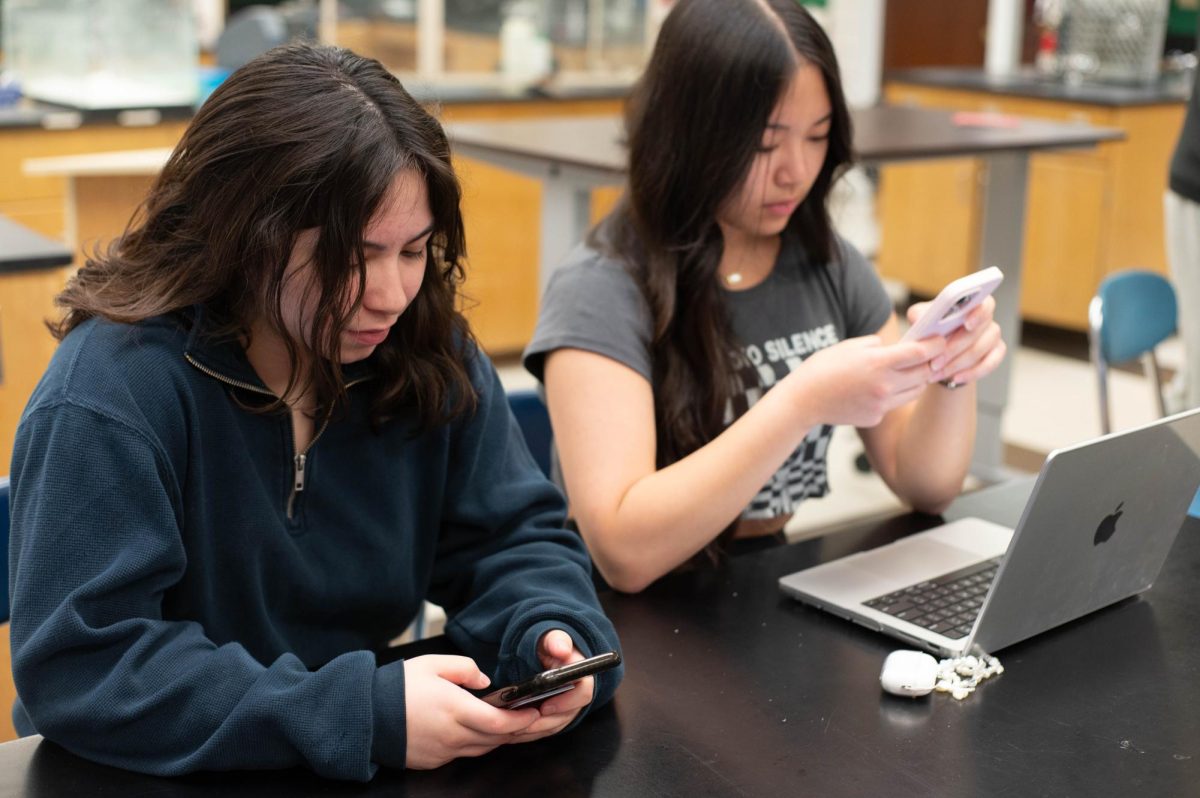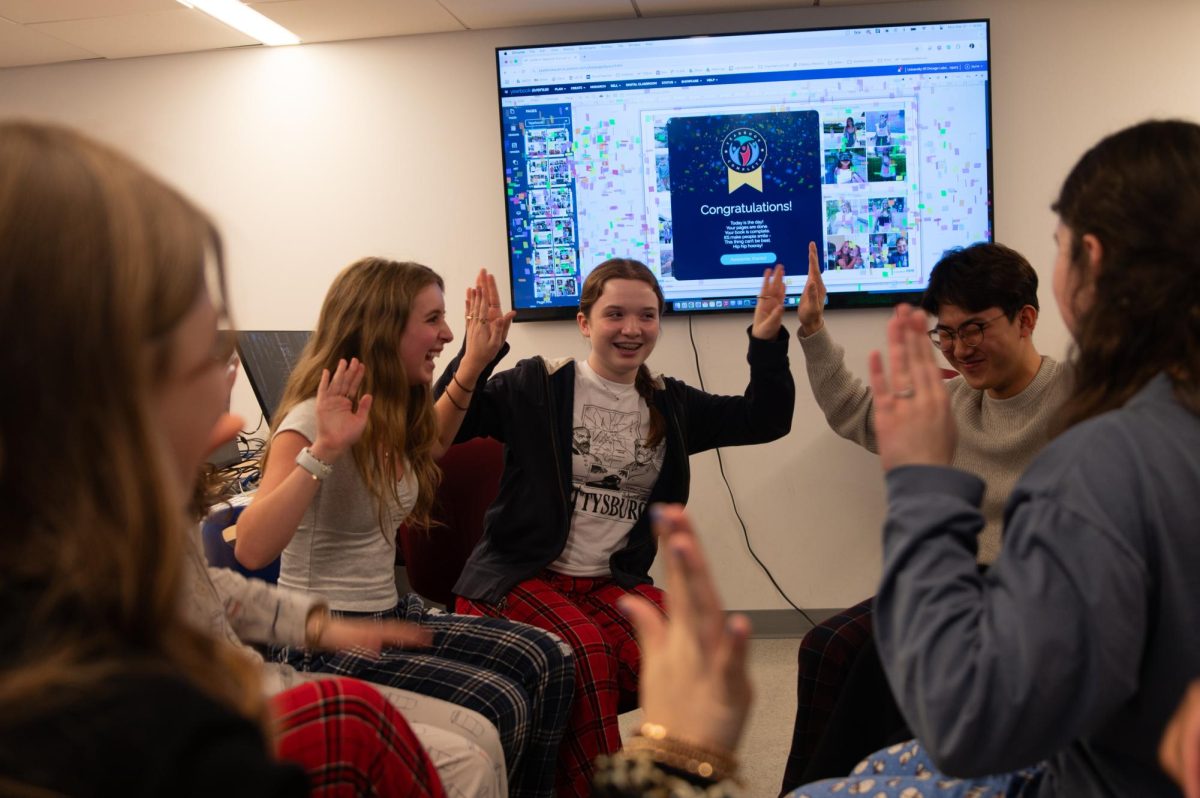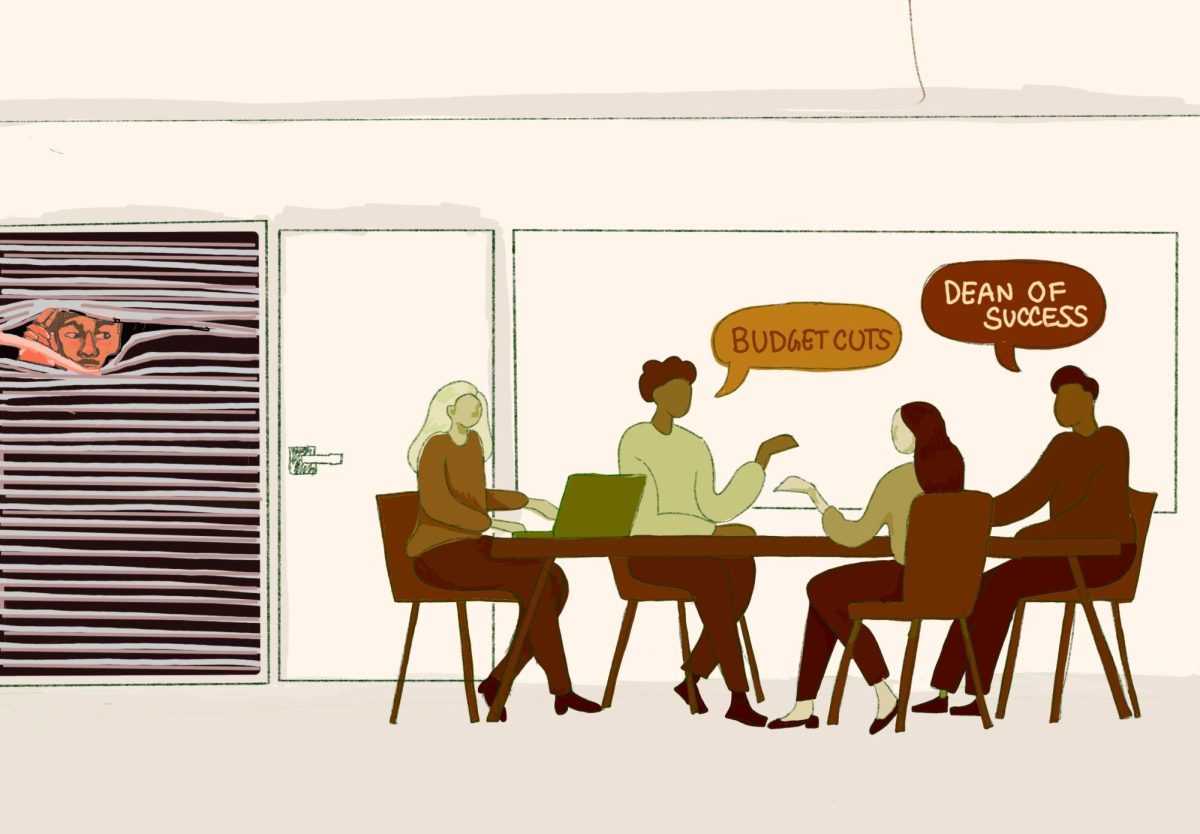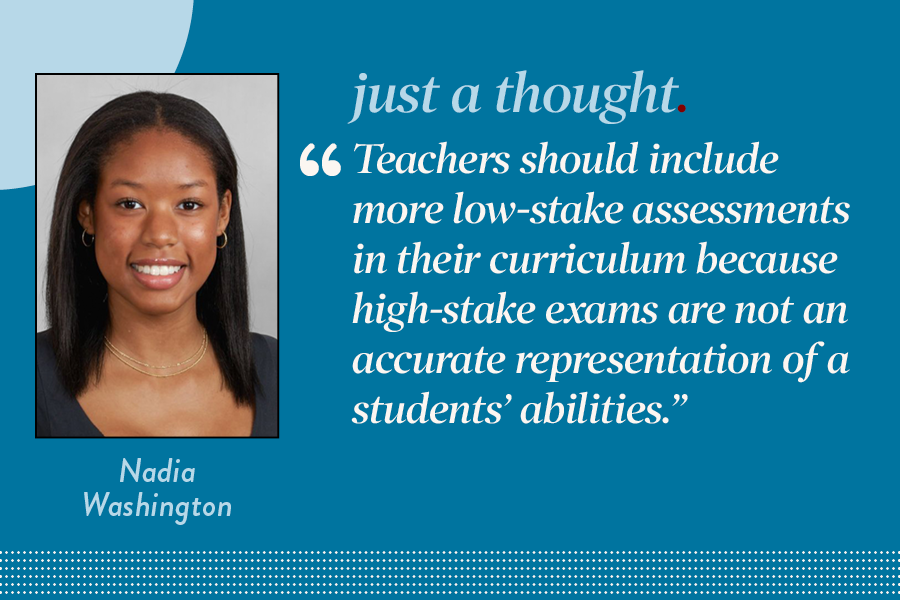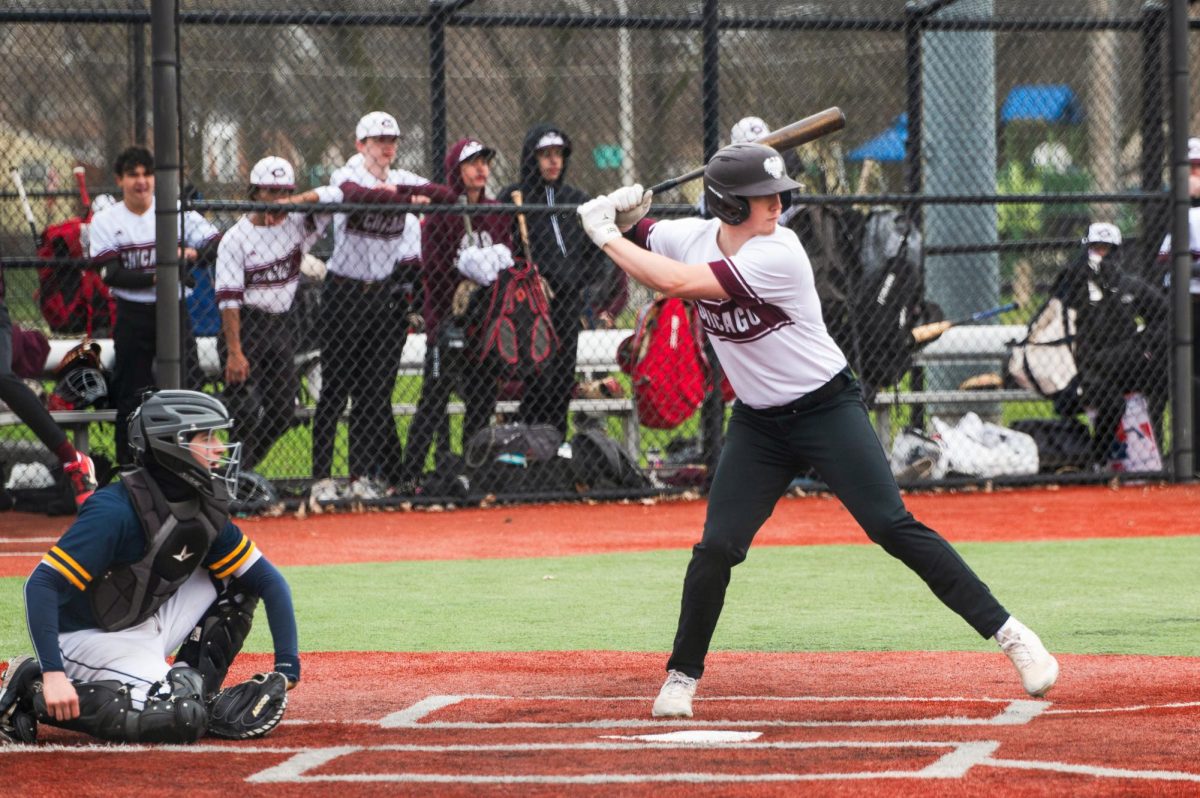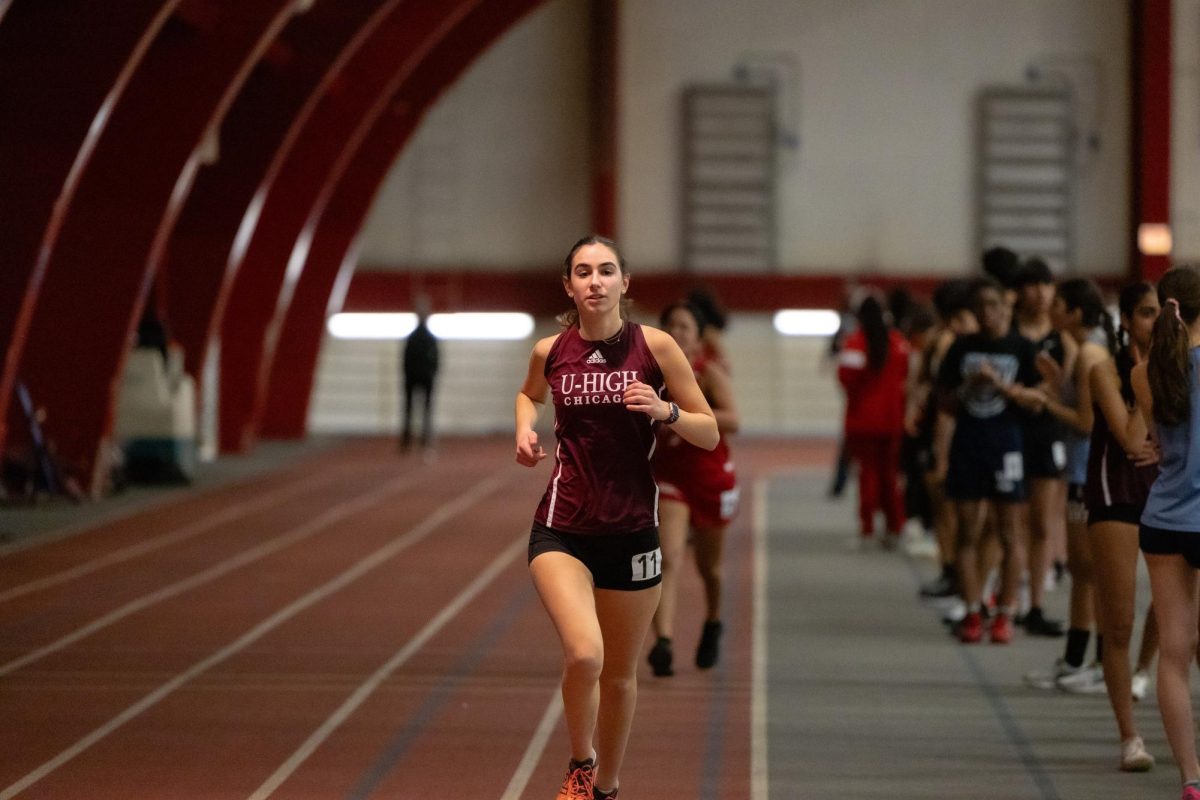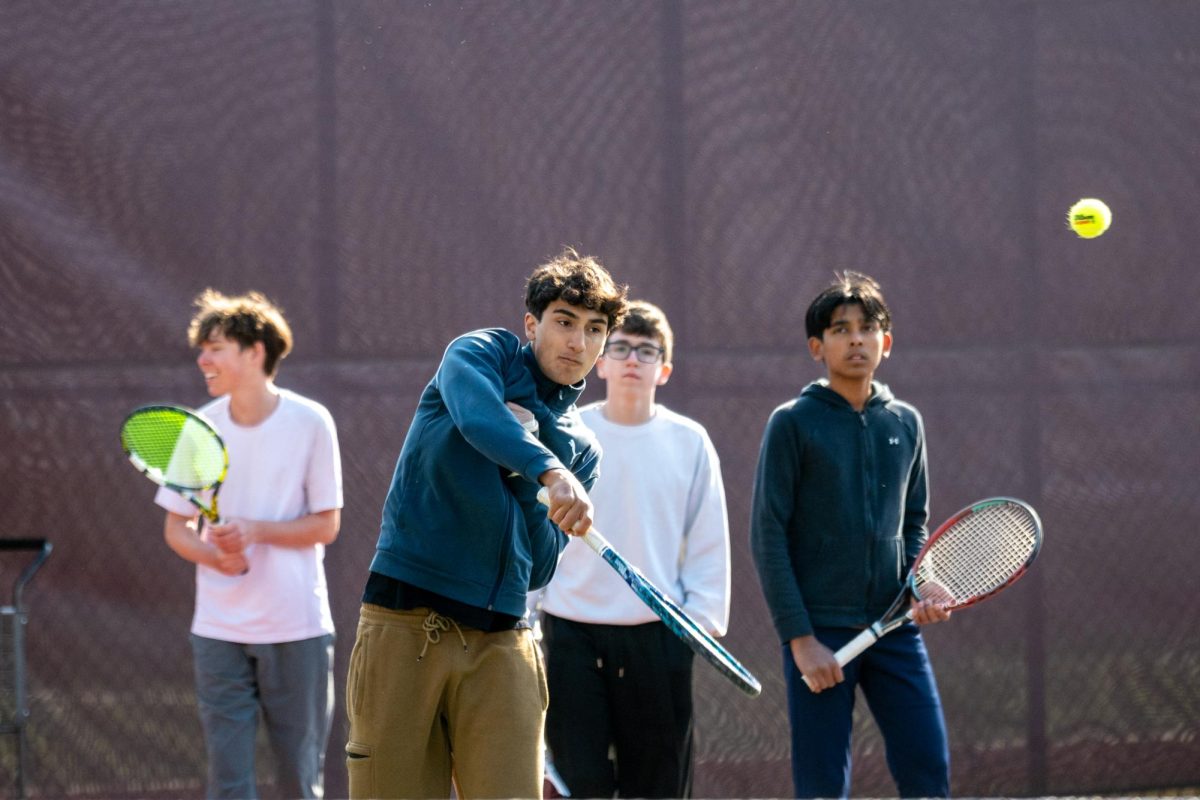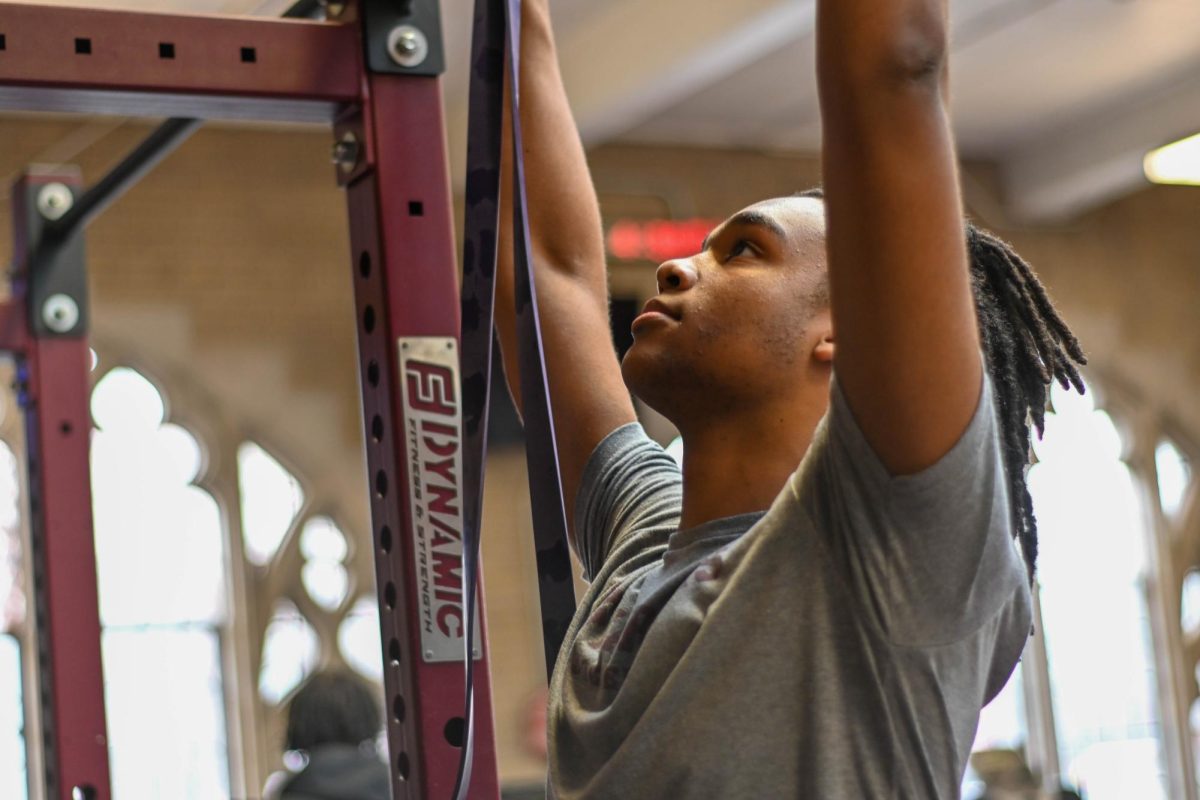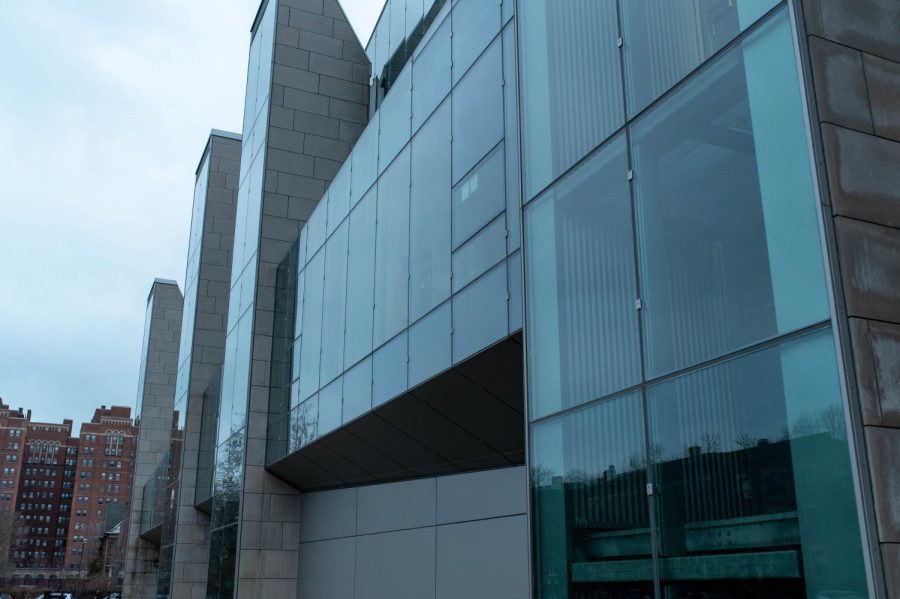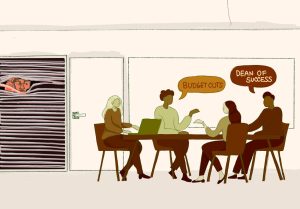Fixing the flight plight: Administration has plan to reduce bird-window collisions
Dead birds can often be found outside of Gordon Parks Arts Hall, because sunlight reflecting off the large glass windows confuses them.
January 5, 2023
An art class heads outside into the crisp fall air, sneakers scraping on stairs, chatter filling halls, and opens the glass door of Gordon Parks Arts Hall. The first two students stop short and carefully step to the side before walking forward again. The other students follow.
But one in the back has missed the signals and steps, sending a small goldfinch rolling a few feet. The students freak out.
“I kicked a dead bird!” cries one, while the others rush around.
During migration season it has become commonplace to see many dead or injured birds around the Gordon Parks building due to window collisions. The school has acknowledged the problem and is working on putting film over large windows to cut down on collisions.
Birds run into windows because the reflections windows cause during the day confuse the birds, and the bright lights throw off their flying and migration patterns at night.
According to the Chicago Bird Collision Monitors, an organization that monitors bird populations and collisions, around “a billion birds die and countless others are injured each year in North America as a result of window collisions.”
Biology teacher Daniel Bobo-Jones believes that an architect’s priorities are demonstrated by what they spend their money on, and most of the time it’s not birds.
Mr. Jones said, “If you look at a lot of the university’s other bigger buildings they have built recently, they’re all problems.”
Another organization, Bird Safe, deals with bird population health and collision reports. They have suggestions for how businesses and households can change their lighting to decrease the number of collisions their building may cause. They recommend turning off or dimming all lights in unused interior spaces, or installing only shielded, downward-directed fixtures.
When talking about bird-safe lighting options Mr. Jones said, “Because birds are everywhere, that’s asking humans to be more cognizant than humans can be.”
But Mr. Jones doesn’t believe birds are a high enough priority for corporations to care.
Mr. Bobo-Jones said that once the buildings are constructed there is very little to do to fix the problem. This is because of either security concerns about turning off lights, or that replacing current windows with polarized ones is more expensive than if they were polarized to start.
Mr. Jones said, “Mostly it comes down to do people want to spend the extra dollars to build buildings that don’t kill birds.”
But often, the answer is no.
However, U-High has a solution the university hopes will go into effect this summer.
“The university started an initiative to put this film up all over our buildings,” said Joe Wachowski, the head of operations at Lab, who explained that the University’s solution to the problem is to put up a custom film on large windows that is patterned with a dot every three inches, as an attempt to decrease window collisions.
Even though there are many solutions for keeping Gordon Parks Arts Hall safe for birds, most of them are very expensive and too time consuming. But maybe in the coming years students won’t have to step around kinglets and accidentally kick finches on their way out of the building.




